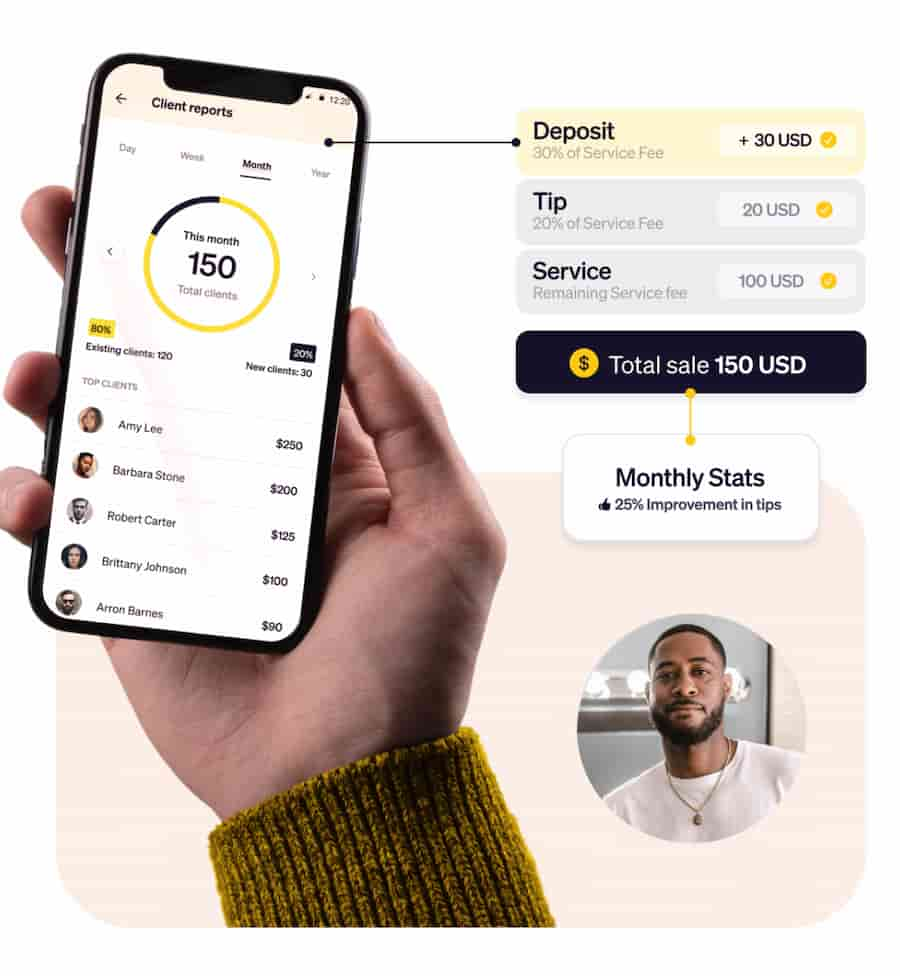Driving Sales Through Personal Branding Techniques

If we were to define one thing that the Internet did to the world, it’s this: The Internet turned every person into a public figure.
And this phenomenon has many levels:
- You can voice your personal opinion and get heard (and even go viral)
- As a company owner, you can lose your business because some of your customers shared their experience with your brand in the public
- Your competitor has the power to spread negative sentiment (or even fake it) and ruin your reputation
- Your company can be judged based on who works for you (or represents your public)
- Your company can get into trouble because of what your employees share on social media…
There are many more this publicity has done to us and our businesses. And there’s no escaping that. But you can take steps to prepare for any disaster that may (or may not come in the future) by developing your personal brand (and the personal brands of your employees who are willing to participate).
There’s one huge benefit here: Strong personal branding can help you drive more sales. People buy from people, so making sure your potential customers know the people behind your brand will definitely create more sales and business opportunities for you.
Here’s how to create a strong personal brand and then generate more sales through that:
1. Feature your team on your site
Your own company’s site is your most important weapon here: You can find multiple ways to feature your employees and tell your potential customers who is behind your brand:
- Create a detailed About page
- Publish regular “Behind the scenes” interviews with your various team members
- Encourage them to create videos
- Tag them in your social media updates
Set up a podcast and let your employees host it. Here’s a great example from First Page Digital of how employees are running a podcast show: Mini projects like this will educate your team and promote their personal brands!

Promoting your employees and sharing how proud you are of them will help you create a stronger and more motivated team. It will also attract more talent to your company – this is referred to as an “employer brand”, i.e. a brand that is known for valuing its employees.
It is also a good idea to allow and even encourage your employees to set up their own mini-websites where they could share whatever they wanted.
It is a great learning curve, as they will learn more when promoting their own sites, and you can sponsor the whole project for them. It can also be very affordable with sites like Namify allowing you to register a domain for as little as $2. And you can host them together with your company site to save on hosting.
Running your own site is the best way to learn digital marketing and experiment with various tactics. You’ll end up with a more motivated and knowledgeable team! To make that learning curve better organized and more effective, consider investing in an all-in-one digital marketing dashboard to keep all your assets (including your business site and those personal mini-sites) under one roof.
This will allow you to better monitor the process and reward the most successful campaigns. Tools like WebCEO are perfect for that as they combine SEO and social media tracking and provide actionable advice on how to improve your metrics:

Invest in your own personal brand as well: Contribute to your company’s official blog on a regular basis! Let your audience see the leadership and expertise behind your business!
2. Encourage personal social media branding
Once you have the foundation created, work on your (and your employees’) social media accounts.
You can use SEO tactics when it comes to optimizing your social profiles. The search functionality of social media networks works the same as search engines such as Google and Bing: it’s all about the keywords.
This is most helpful when it comes to optimizing your LinkedIn profile because potential customers will likely be using that search bar to find a candidate. Therefore, you have to think like the searcher and optimize your site accordingly.
If you’re a content writer, be sure to put that keyword as captions on your photo, in all of your descriptions, and in your headline. This will help your name pop up on LinkedIn when someone searches for that term.
You can follow this advice for every participating employee to help them get found organically as well.
Encourage your employees to engage with your business pages using their personal profiles: Let them comment and reply to comments, like and retweet/share your updates. This will help your company’s social media profiles to generate more organic visibility as well.
This way – gradually – you will be helping your and your employees’ personal branding grow. But how to translate that growth into sales?
3. Generate more sales
From there, you can encourage your employees to help you sell more. They will all be on board because they are already appreciating you featuring them on their sites and putting them into the spotlight. Create a quick how-to guide on how their personal channels could help generate sales:
- Invite them to add your company as their employer on Linkedin, Facebook, and their personal sites.
- Encourage them to reply to your customers’ reviews, especially if they are mentioned.
- Encourage them to put your business phone number on their personal website. There are a few great phone apps that will allow you to monitor where those phone calls are coming from to identify the most effective conversion channels those personal channels generate.
- If your company is providing services, let your employees collect their own leads from their personal accounts. They can set up personalized CTAs using tools like Goldie, and you will be able to track which of your employees is driving the most leads and sales. Make sure to reward your most successful team members to encourage others to monetize their personal channels as well!

Last Things to Think About
There’s one common doubt business owners express when confronted with the idea of building their employees’ personal brands: What if they leave? Will all that effort be in vain? Will another brand benefit from that personal brand we built together?
Those are all valid questions but leaving employees is the normal cycle of any business. The solution is to help each of them grow, some will leave, but most of them will become your loyal supporters (even if they do end up leaving at some point) and brand advocates.
“Growing together” is one of the most powerful concepts in business and marketing, and in team building it is the most powerful one.
If you allow your team’s personal brands to shine, you’ll build an army of brand ambassadors who will be ready to protect your reputation at a time of any crisis.
Tags: Business Reputation Marketing, Personal Branding, Social Media Marketing.
